Meditating in Tibet – Top Tibetan Sites for Meditation
Meditation is a unique practice where individuals use certain techniques to train themselves to be more attentive and increase awareness to gain a mentally clear and emotionally calm state of mind. Meditating in Tibet has been used for thousands of years, and there are as many variations of meditation as there are religions in the world. The origins of meditation come from the early Hindu Vedanta traditions and have been used in Tibetan Buddhism since its inception and introduction to the Tibetan people 1,300 years ago.
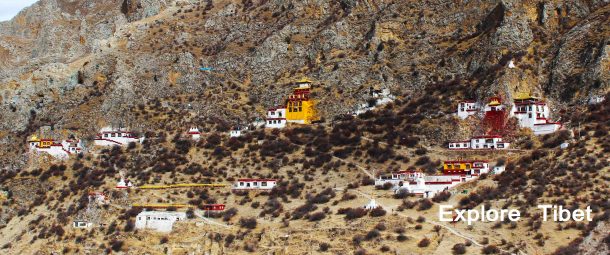
Tibet is one of the most ideal places to be for practicing meditation, as this vast and desolate landscape promotes a natural sense of well-being and calm, and the Tibetan Buddhist religion of the plateau can help travelers to induce and reach that state of peace that comes with meditative practice. Tibetan monks and lamas spend much of their lives in meditation, and it is widely known that the ancient Buddhist sages such as Milarepa and Padmasambhava spent many years in meditation caves and sanctuaries in their quests for enlightenment. With such a vast area of the plateau to choose from, there are a huge number of places where you can travel to find that perfect place to meditate and reach a calm state of mind.
Table of Contents
Drak Yerpa Monastery
There are few places like the meditation caves at Drak Yerpa Hermitage in Dazi County of Lhasa for a little meditative contemplation. Located around 16km to the northeast of Lhasa, this site was once one of the holiest cave retreats in Tibet and was attended by such Buddhist sages as Padmasambhava and Atisha.
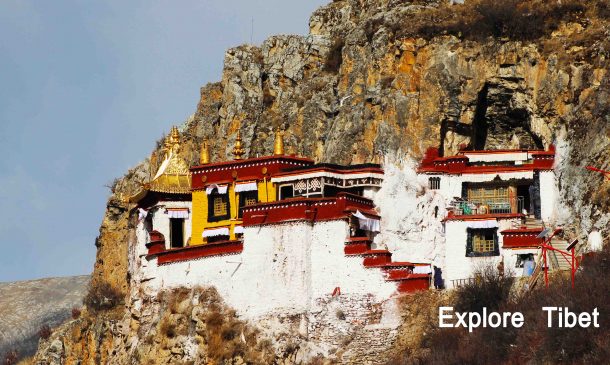
As well as being popular with the Tibetan king, Songtsen Gampo, whose Tibetan wife established the first chapel on the site in the 7th century. Caves dot the entire lower face of the cliffs, and there are different practices that are done in several of the caves by pilgrims visiting the site. It is said that there are exactly 108 caves at the site, an auspicious number in Tibetan Buddhism, which is one of the reasons the site is sacred.
Caves are not the only place to meditate at Drak Yerpa, though. Sitting on the hillside overlooking the beautiful Lhasa Valley, the hermitage Lhakhang faces some of the most stunning countrysides in Tibet. Looking out over the lush green valley, with its small shrub bushes dotting the hillsides, is a relaxing sight in itself.
Pabonka Hermitage
Located around eight kilometers to the north of Lhasa Old City, the Pabonka Fort was originally built on a huge stone that vaguely resembles a turtle. An ancient Hermitage that predates the sacred Jokhang Temple and the fort that once stood on the site of the Potala Palace, the hermitage is one of the oldest buildings in Tibet.
It is said that the fort that once stood there, which was destroyed during the rule of Langdharma, stood nine stories high and was the site where the first Tibetan words were written in stone and were seven sons of noble birth became the first Tibetan Buddhist monks.
The site is isolated in the area, sitting atop its turtle-rock, and is peaceful and serene with few tourists. While the hermitage is a wonderful place for peaceful contemplation, the hillside behind this remote hermitage is just as peaceful, and looks out over the beauty of the Lhasa Valley.
Samye Monastery
The first Buddhist monastery in Tibet, Samye Gompa was built to revitalize Buddhism in the empire and is located in Dranang in Lhoka. The site is auspicious in Tibetan Buddhism, as it was the place where the Buddhist master Padmasambhava performed the sacred dance to rid the area of a local malevolent spirit, binding it to be the protector of Buddhism in Tibet.
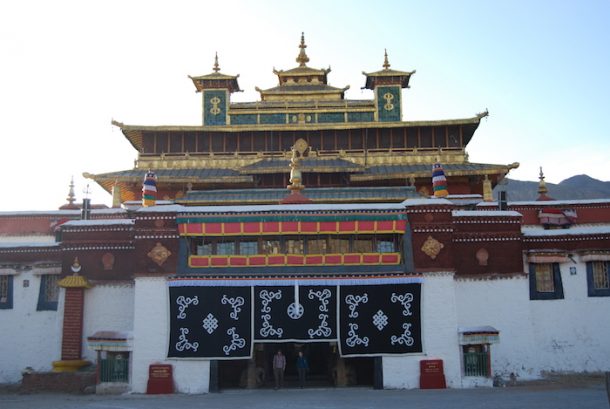
The monastery is built around a model of the universe, with the main hall representing Mount Meru, and the outer temples representing the oceans, continents, and other features in Buddhist cosmology. The monastery is also renowned for being the location of the Sacred Tree, a popular site for pilgrimage on which is placed stones and threads by pilgrims and meditators.
Chim-puk Hermitage
A collection of cave shrines that lies to the northeast of the Samye Monastery, Chim-puk Hermitage is built around the meditation site of Guru Rinpoche, who spent several years in the caves there meditating and teaching. It is known that the Tantric practitioners of the caves were once famed for their protection of the fields and harvests from the storms of the region. The site contains dozens of meditation caves that can be found across the hillside, and even the hillside itself, which looks out over the beautiful valley below, is a great and quiet place for meditating.
Rongbuk Monastery
Sitting pretty at an altitude of 4,980 meters above sea level, this high monastery sits on the location of several ancient meditation caves, which can be found in the hillside behind the monastery. With their perfect views of the highest mountain peak in the world, these small caves make a great place to meditate.
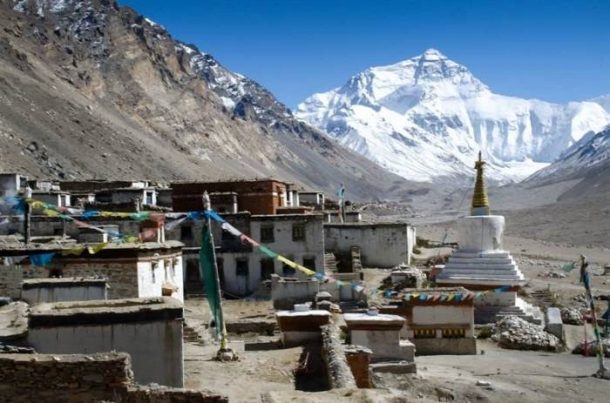
However, the best place for meditation is the meditation cave that lies under the monastery itself, stretching out under the base camp. A surreal and out-of-this-world experience, the cave has been used by the abbots of the monastery since it was built in 1902, and before that was a hermitage for Buddhist nuns and a pilgrimage site for Sherpas.
Holy Mt. Kailash
As the most sacred mountain in the world in Buddhism and Hinduism, Mount Kailash is the ideal place to go for meditation. A serene and spiritual mountain, this huge pyramid of black rock is believed to be the earthly representation of the legendary Mount Meru, and has five monasteries around its base. Any of these monasteries makes a good place to meditate, and if you can make the trek around the mountain, you can also sit on the crest of the Dolma La Pass at more than five thousands meters and meditate with one of the most amazing views on the planet in front of you.
Sacred Manasarovar Lake
Lake Manasarovar, which lies to the south of Mount Kailash, is one of the Great Three Sacred Lakes of Tibet and is often considered to be the most revered in both Hinduism and Buddhism. Believed to be the place where Maya Devi conceived Siddhartha Gautama, who later became the Sakyamuni Buddha, this stunning lake is believed to be the embodiment of purity, and both Buddhists and Hindus believe that to drink of or bathe in the waters will absolve you of the sins of an entire lifetime.
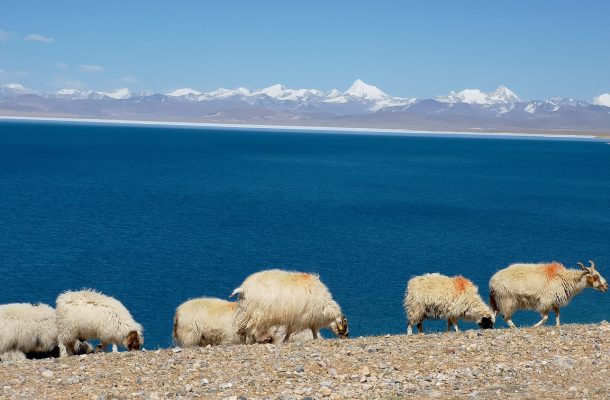
The quiet shores of the lake, which see few tourists throughout most of the year, are an ideal place for meditation, with the serenity of the place and the stillness of its sweet fresh waters. There are five temples that are also dotted around the lake, each of which is located in an auspicious location according to Tibetan Buddhism, and which all make good sites to meditate in peace.
Recent Posts
Exploring the Beauty of Tibetan Handicraft
The Ultimate Guide to Tibet Tours, Travel, and Trekking Adventures
How to Explore Tibetan Culture
All Categories
- About Tibet
- book a Tibet tour
- Buddhism Practice
- Budget Tour
- China-Tibet Train
- Customized Tibet tour
- Historical Sites
- Hot Springs in Tibet
- News
- Photography in Tibet
- Tibet attraction
- Tibet Group Visa
- Tibet Motorcycle Tour
- Tibet Small Group Tours
- Tibet Tours and Tibetan Tour Guide
- Tibet Train
- Tibet Travel FAQs
- Tibet Travel Information
- Tibet Travel News
- Tibet Travel Permit Update
- Tibet Travel Prices Rises
- Tibet Trek
- Tibet Trekking Tour
- Tibet weather and climate
- Tibet Wildlife animals
- Tibet Winter Tour
- Tibetan Buddhism
- Tibetan Cultural Features
- Tibetan Culture and Poeple
- Tibetan Festivals
- What to see in Tibet



